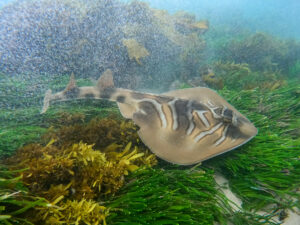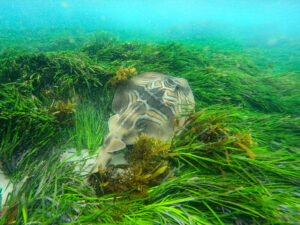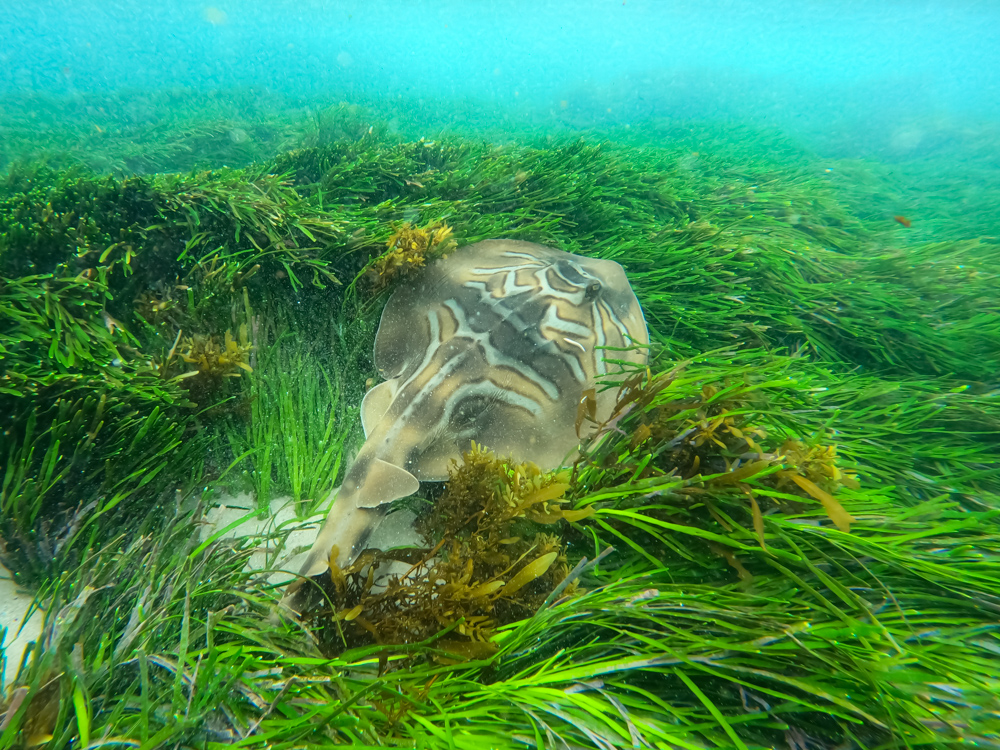Say hello to one of Australia’s remarkable creatures, the Eastern Fiddler Ray. This ray species stands out for its unique appearance and behaviors, making it a special sight for both underwater enthusiasts and casual observers.
Swimming with the Eastern Fiddler Ray
Snorkelling in Australia’s waters can be a unique experience, especially when encountering the Eastern Fiddler Ray. These rays are not typically dangerous to humans, but it’s always important to remember they are wild creatures and to respect their space. If you see one while snorkeling, admire it from a safe distance. No touching or direct interaction is advised.
How do you identify an this ray? Look for a broad, diamond-shaped body, with lengths that can reach up to 1.2 meters. Their upper bodies bear a fascinating pattern of blotches and spots, each ray carrying its unique design. Their underside is usually white or cream, offering a striking contrast to their darker topside.

Distribution and Conservation Status
The Eastern Fiddler Ray graces the coastal waters of southern Australia, with a range extending from southern Queensland along the south coast up to the central west coast. Their preferred habitats are sandy or seagrass areas, where they often blend with the surroundings.
These rays are considered ‘Least Concern’ by the IUCN Red List. It is worth nothing the latest assessment dates from 2015 so it is worth an update.
Behaviour and Character of the Eastern Fiddler Ray
The Eastern Fiddler Ray is a bottom-dweller and is often spotted half-buried in the sand or seagrass, especially during the day. They display a calm and non-aggressive nature, typically opting to swim away when approached.
What sets this ray apart is their interesting feeding behavior. Equipped with an unusual mouth shape, they crunch their way through crustaceans and mollusks, their main diet. They also exhibit a keen sense of smell, which they use proficiently to detect their prey, demonstrating their adaptation to the benthic lifestyle.
In conclusion, the Eastern Fiddler Ray is more than just an interesting sighting for snorkelers. I was personally pretty excited about my first encounter, when I first saw encountered one when snorkelling near Forster in New South Wales, they really are a special sight.

Distribution
Temperate waters of southeast Australia
Facts
Max Size: 125 cm
Lifespan: 11-15 years
Depth: 0-180m
Risk and Safety
No risk, does not sting and will keep its distance.
Conservation
IUCN Status: Least Concern
